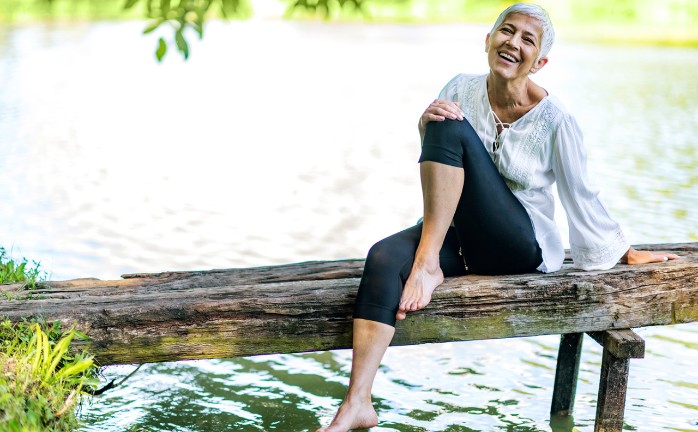
Comprehensive Vein Treatment
Varicose veins
Overview of varicose veins
Varicose veins are enlarged or twisted blood vessels that can be seen just under the surface of the skin. You may initially notice them on your legs – where they are most common – but they can appear on other body parts, too. More than half of all people over the age of 50 have varicose veins, but the condition is more common in women than in men.
If you are unhappy with the appearance of your veins or are dealing with pain, find a doctor from our team of experienced providers at Dignity Health Mercy Medical Center and discuss your treatment options.
Symptoms
The symptoms of varicose veins can vary. For some people, they are merely cosmetic, with no discomfort or pain. However, there are people who do experience pain and discomfort with varicose veins. Each case is different.
With this in mind, you may or may not experience the following symptoms:
- Swollen, twisted visible veins
- Veins that are dark blue or purple
- Aching or pain while standing, or after standing for a prolonged period of time
- Throbbing or cramping in the affected area
- Discolored skin around the veins
- Itchy, restless, or swollen legs
Causes
No one knows precisely what causes varicose veins. Your blood vessels, including the veins (which carry blood back to your heart), contain natural valves that control blood flow. The condition exists when one or more of these valves become weakened or damaged.
When this happens, the muscle contractions that push the blood through the veins send the blood through the valves, but the valves don’t close properly behind it. This allows the blood to flow back through the vein and pool behind the valve.
Types
Varicose veins are larger veins that show up underneath the skin. Spider veins can also appear on their own or along with varicose veins. Spider veins are similar to varicose veins, except that they are smaller and are typically blue or red in color. They also tend to be positioned closer to the surface of the skin.
Risk Factors
The reason the valves in varicose veins fail is unknown. There are a number of risk factors that can play a role. Perhaps first among these is that some people are born with weak valves or have a family history of vein or valve disease. People who smoke are also at risk. There are other potential risk factors to consider as well, including:
- Age – The older you are, the higher the risk.
- Gender – Women are at greater risk than men.
- Pregnancy – The higher volume of blood during pregnancy can enlarge veins in the legs.
- Inactivity – Standing or sitting for too long results in reduced blood flow.
- Obesity – Additional weight increases the pressure on your veins.
- Previous injury – Injury can cause damage to the veins.
Prevention
There are a number of things you can do to help prevent varicose veins. The majority of these are lifestyle changes, including:
- Getting plenty of exercise
- Avoiding sitting or standing for long periods of time (change positions regularly and take breaks, even if you are at work)
- Maintaining a healthy weight
- Avoiding tight pantyhose, tights, or other clothes
- Avoiding the use of high heels
- Elevating your legs when sitting
- Wearing compression stockings
- Eating a diet that is high in fiber and low in salt
The information contained in this article is meant for educational purposes only and should not replace advice from your healthcare provider.
